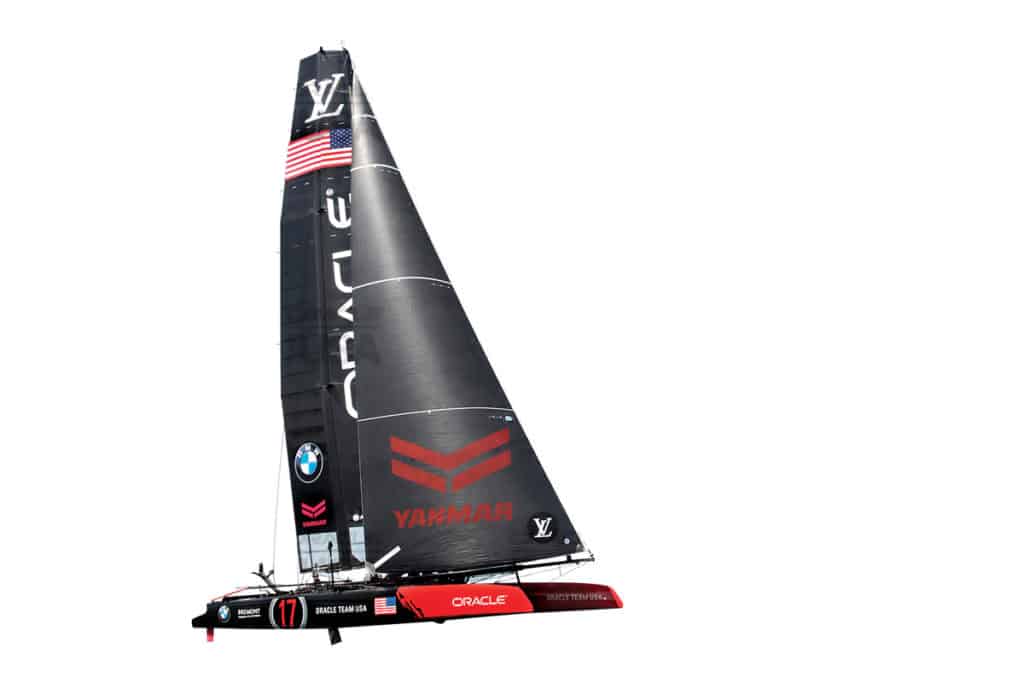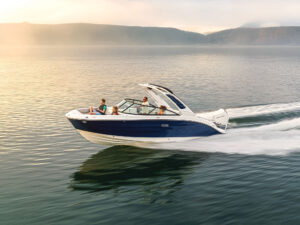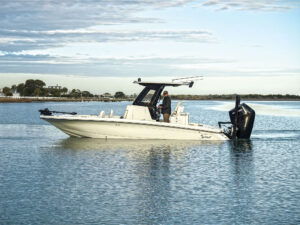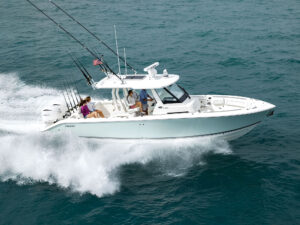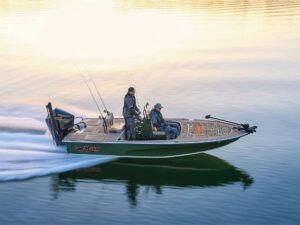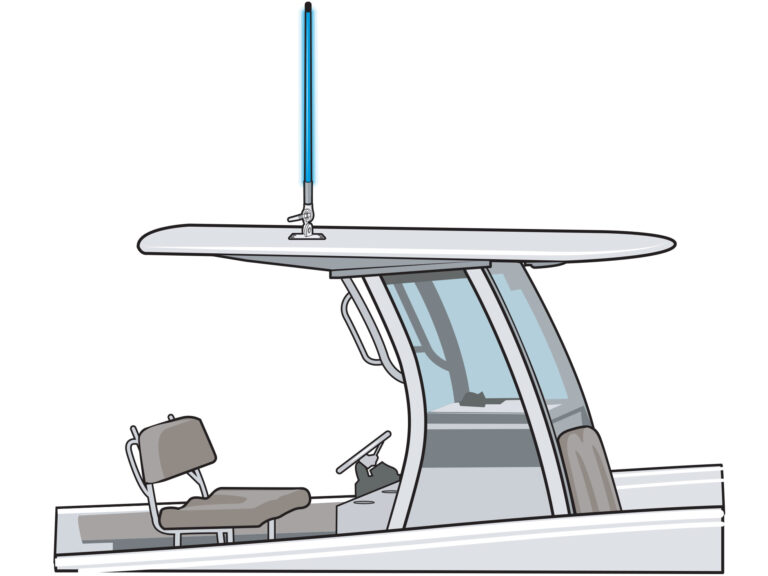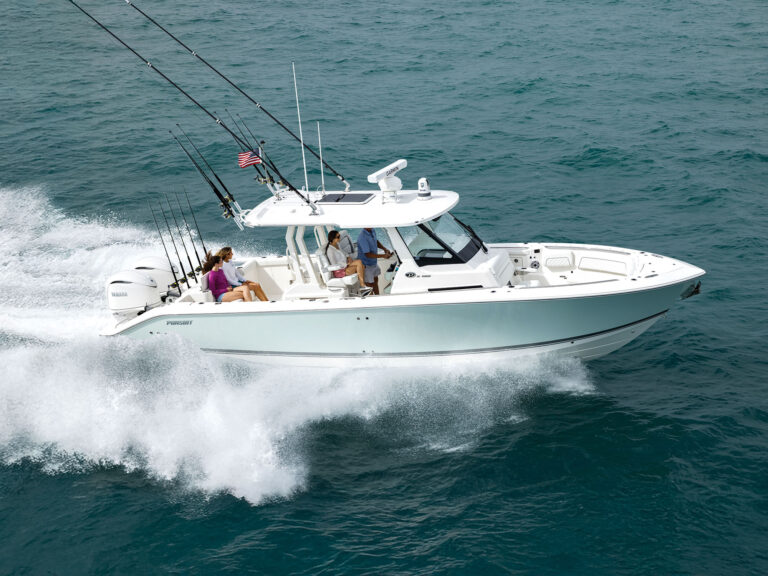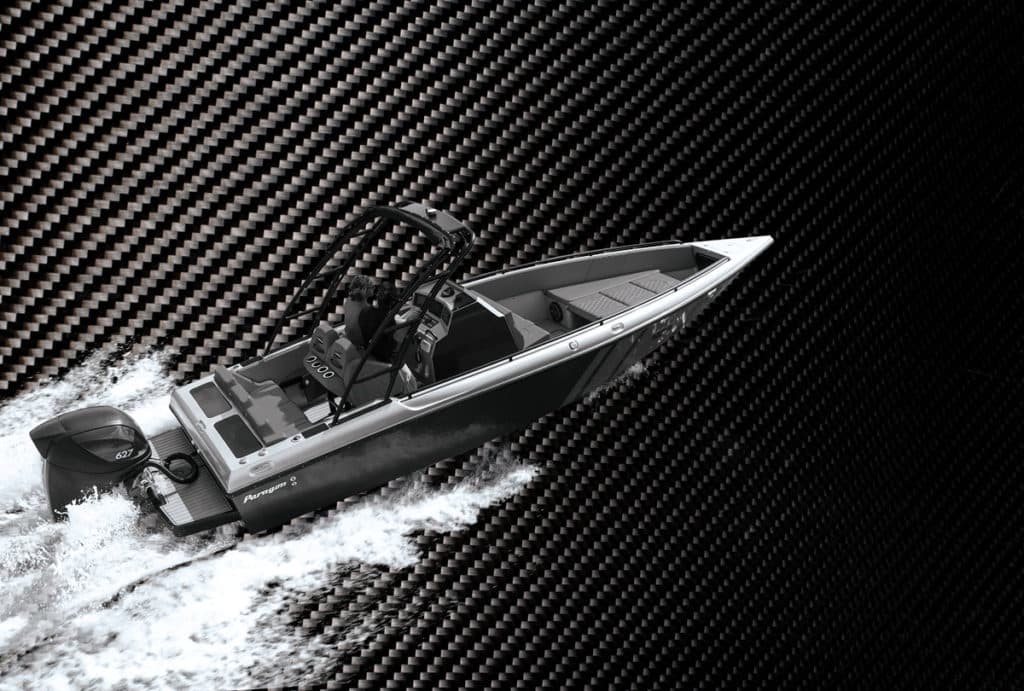
Like the word stealth, carbon fiber has crept into our modern language, and you’ll find its distinctive black diamond pattern on everything from clipboards to refrigerators. It is an absolutely crucial material in the F-22 Raptor fighter aircraft, but probably not so essential in the glove-box door of your SUV. Carbon fiber has become a trendy decorating item.
Fiberglass was once heralded as the miracle material for boats, and it did, indeed, take a bite out of wooden-boat construction. Though it revolutionized boat construction, it didn’t quite prove to be the no-maintenance material originally promised (laughter in the wings), but it was a major step forward. There was a time, more recently, when Kevlar was touted as the be-all and end-all for composite boat construction.
Today, the magic words are carbon fiber. You’re going to see them bandied around by builders and dealers (and a few snake-oil salesmen) as the material hastening a new revolution. But is it really one?
Well, the absolute definitive answer is yes — and no. Carbon fiber has some wonderful properties, but it also brings higher costs and a few downsides. We got to experience it firsthand aboard the Paragon Super Sport 28 from Carbon Marine. Here’s what we found.
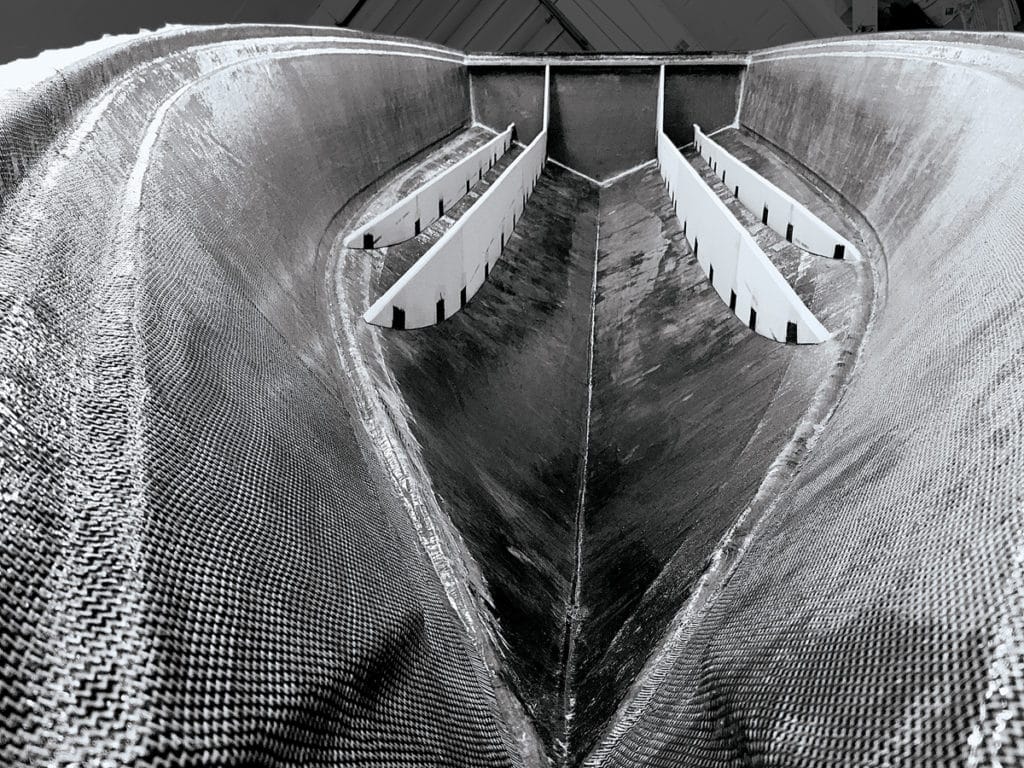
The Carbon Upsides
We all know that fiberglass is a composite made from strands of glass that are woven into fabrics and reinforced with resin to create hulls and decks. Carbon fiber simply replaces those glass strands with filaments of carbon. On the chemical side, carbon crystals are shaped like honeycombs, and they align naturally into long, flat ribbons, which are then woven into a matrix much like a coarse fiberglass cloth is.
In the case of the Paragon Super Sport 28, the carbon-fiber matrix is bonded with high-quality vinylester resin, which is essentially what aircraft (Boeing) and car (Lamborghini) manufacturers are using in their high-performance products, as do high-end boatbuilders such as Viking Yachts.
Why carbon fiber? This is a three-word answer: lighter, stronger, stiffer. These are the qualities that have endeared carbon fiber to the aerospace, automotive and military industries. Here’s a breakdown of those attributes.
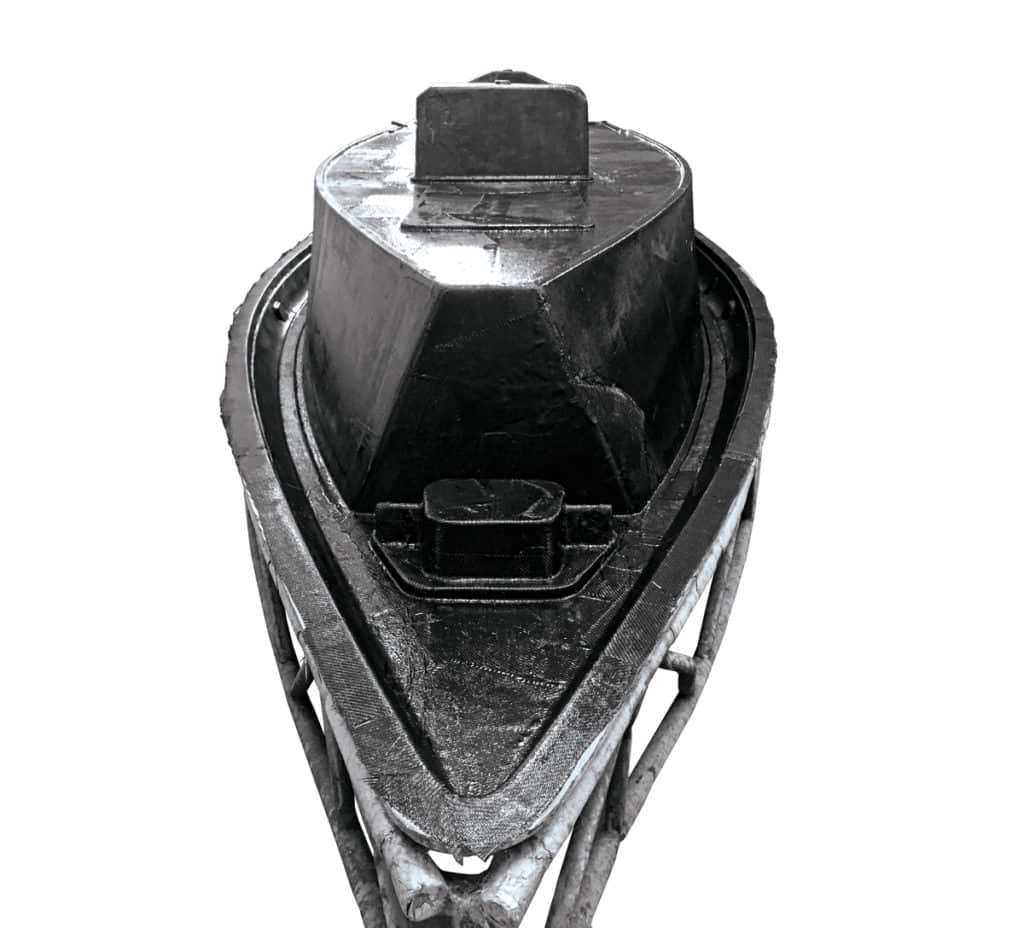
Lighter: In simple terms, if you can build an object in carbon fiber — whether a boat, car or airplane — that is lighter than a similar object in fiberglass, you’ll get more speed and better fuel efficiency. Carbon fiber has a strength-to-weight ratio about twice that of the S-glass used in most boats. That translates into the same strength at half the weight of fiberglass, or twice the strength at the same weight.
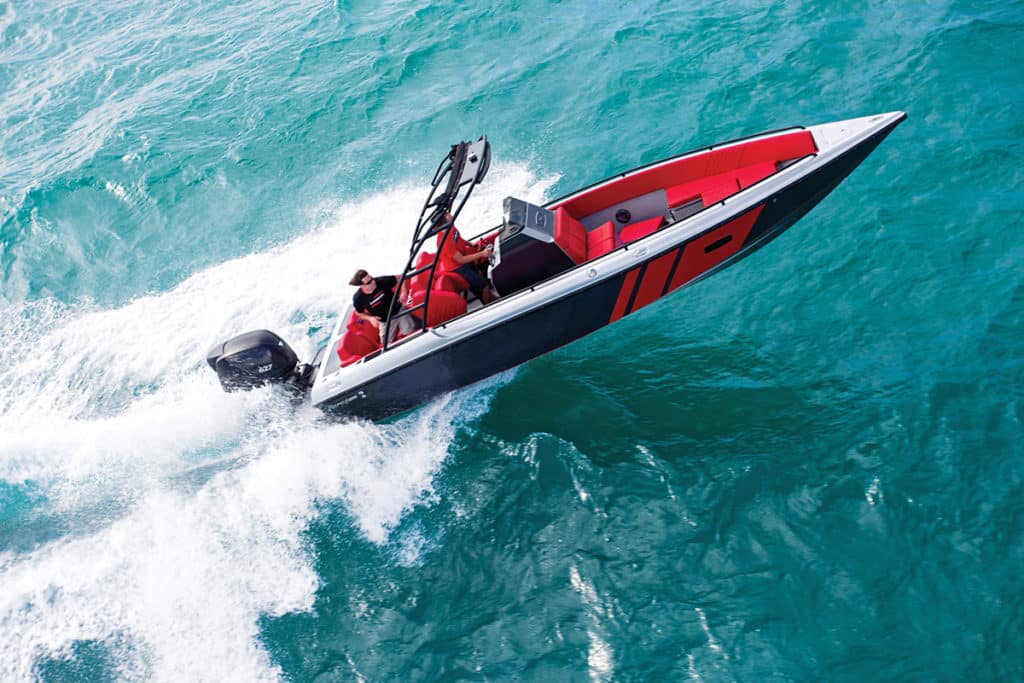
Carbon fiber has a strength-to-weight ratio about twice that of typical fiberglass. Carbon Marine
Stronger: Carbon fiber is stronger than fiberglass, so it adds extra strength to the equation, which is why the driver of the first McLaren carbon-fiber Formula One race car walked away from a major crash when the car’s surrounding “tub” saved him. A material that is stronger also allows builders to use less of it to achieve the original strength, and once again, lighter is faster and more efficient.
If you build a boat that is lighter with equal strength, you’ll spend less time at the gas dock and more time fishing or doing whatever it is you like to do while boating. Running the Super Sport 28, we saw 2 mpg at 51 mph, so Paragon owners shouldn’t count on Christmas cards from their fuel suppliers.
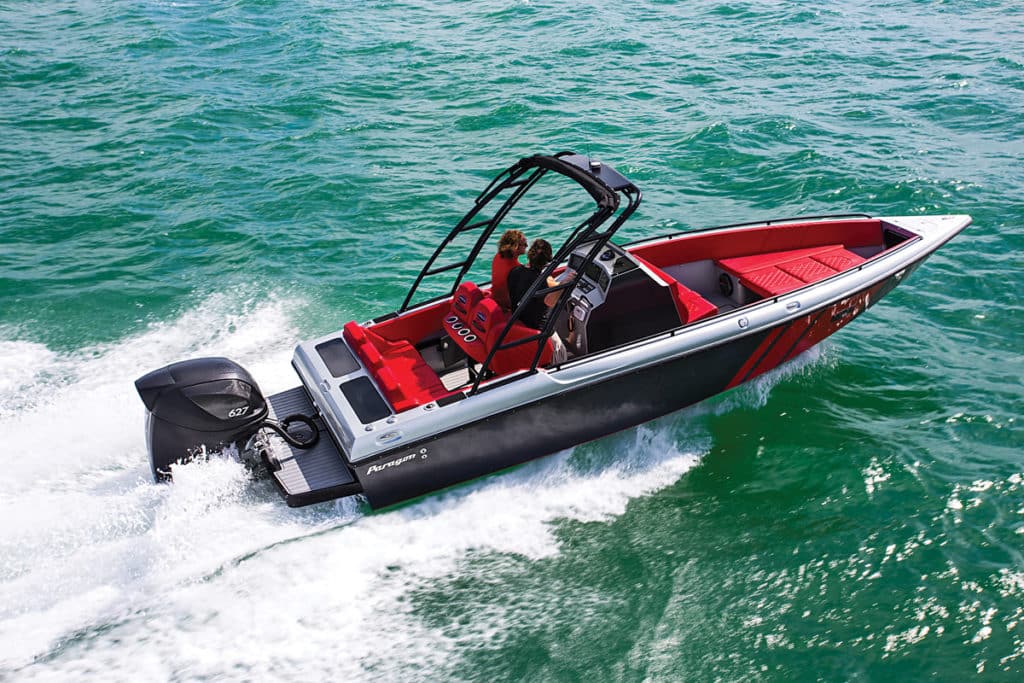
Carbon fiber has a stiffness about six times that of E-glass, so it won’t flex or warp. Carbon Marine
Stiffer: Stiffness is the last trait of carbon fiber, which has a modulus of stiffness about six times that of E-glass, an upgraded fiberglass used in boatbuilding. In real-world boating use, that stiffness translates into a hull that doesn’t “oil can” (flex at high speeds) or warp when it sits on a trailer.
Strength is obviously desirable, especially when it comes with the bonuses of lightness and stiffness. All these features are valuable assets when building a boat and make carbon fiber the new buzzword. You already see it in accessories.
Taco Marine launched a new line of carbon-fiber sport-fishing outriggers, which promptly won an Innovation Award at the 2016 Miami International Boat Show. Product development manager Jose Chao notes there was a learning process to take advantage of the material, but he adds: “Carbon fiber outriggers are an easy choice — they’re lighter, stiffer and stronger. We don’t need to use spreaders to support them, and with the growth of electric reels and big teasers, fishermen put a bigger load than ever on the riggers, and they handle it easily.” Taco makes 16- and 20-foot outriggers but, due to the spiral wrapping design, Chao adds, “We have to educate our clients as to what proper carbon fiber looks like.”
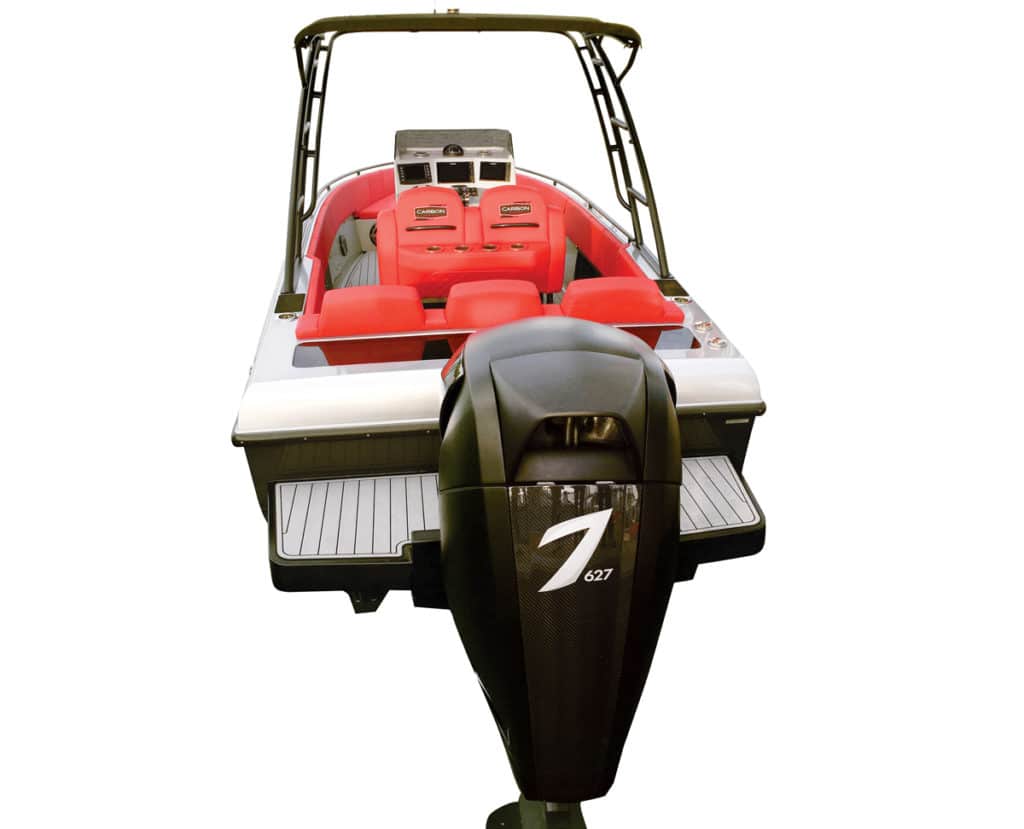
The Downsides
Every silver lining has a dark cloud, and carbon fiber has a few, the first being higher cost. One manufacturer estimated the price of commercial-grade carbon-fiber composites to range from $5 to $20 per pound, depending on the variables, while fiberglass ran from $1.50 to $3. Some of that cost differential is mitigated by the fact that you use less carbon fiber (by weight) than fiberglass to build a boat, but the hard reality is that carbon fiber is a considerably more expensive material.
Do you need that extra cost? For a Formula One car, speed is measured in ounces saved, so it clearly makes sense — for a boat to take your family on an afternoon outing, perhaps not so much. However, you can’t disregard the “cool” factor. Those thousand-dollar rims on your SUV don’t make one iota of difference in speed — but they look great, and so does a carbon-fiber hull, as long as the builder uses clear gelcoat like Carbon Marine does. With colored gelcoat (as used by Yellowfin Yachts on its carbon-fiber models), you need to look places, such as under the gunwale, or in the bilge or engine bay, to see the black-fiber pattern.
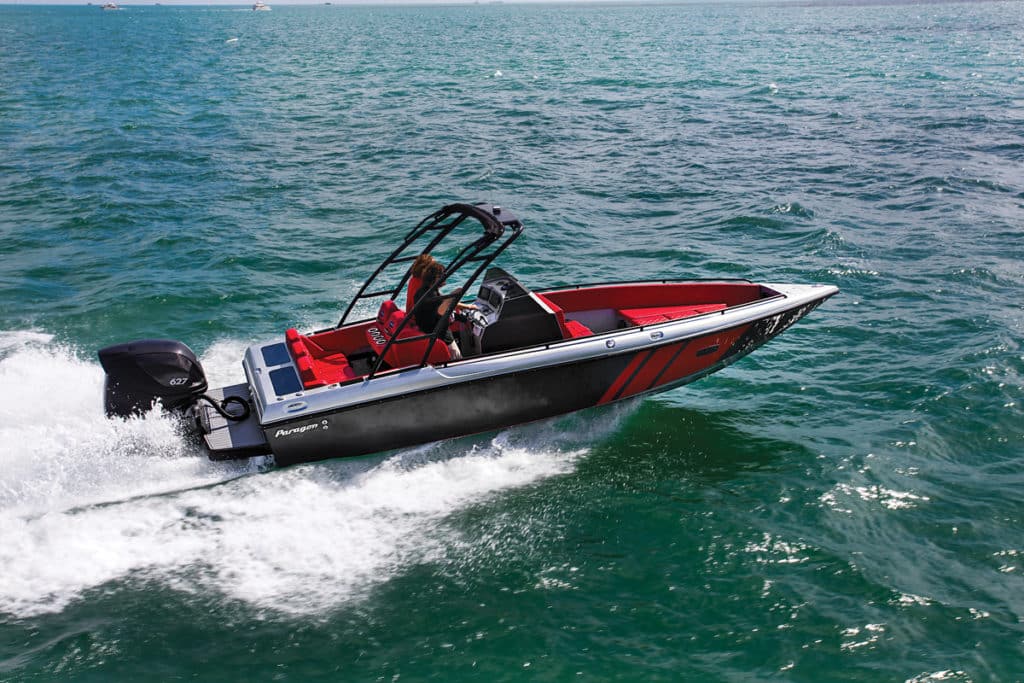
Carbon fiber is also fairly inflexible, which makes it unsuitable for products that need to flex such as skis and helicopter blades. Baseball bats and boat bottoms are another thing, however, and you want these to be rigid. That inflexibility leads to one issue: Fiberglass will often warn of an impending failure by fracturing, whereas carbon fiber has a reputation for what engineers call “catastrophic failure.” That means that everything is fine right up to the instant when it breaks. That, of course, is not as much of an issue in a well-designed boat, but it’s still something to consider.
Another surprising downside to carbon fiber in boats is that it conducts electricity. Hook a battery to the stern of a carbon-fiber boat, wire up a lightbulb at the bow, and the bulb will light without wires. That makes construction more complex for builders because they need to insulate everything from the carbon-fiber structure.
It’s an issue also faced with steel yachts, so it’s easily manageable, and the American Boat and Yacht Council addresses carbon fiber in a technical bulletin (E-11) that essentially says to insulate anything that has power coming or going. Insulation should be used with everything, from electronics to something as simple as a switch panel, to prevent electricity from reaching the carbon fiber. That includes special care around through-hull fittings in salt water because salt water becomes an electrolyte that can lead to damaging corrosion and electrolysis.
Communication is another thing. While fiberglass is transparent to wireless signals, carbon fiber (like steel and aluminum) can reduce a Wi-Fi signal by up to 95 percent, according to Raymarine, which suggests taking care to separate electronics from carbon fiber by at least 4 inches to eliminate any ground effect that would inhibit the signals. It also recommends testing each area before drilling holes (which is good advice to heed anytime).
Carbon fiber also requires more skill in craftsmanship simply because of its color. Carbon fiber is black, so when a crew lays up carbon fiber, they have to be alert to spot any bubbles as the resin wets out, which can easily be seen in white fiberglass materials.
So there you have a look at carbon fiber. With it, you’ll get a boat that is faster, more economical, stiffer and lighter, plus has a better cruising range. And, if Carbon Marine is the new standard, an all-carbon-fiber boat also gives you an edge in having the newest and coolest boat around.
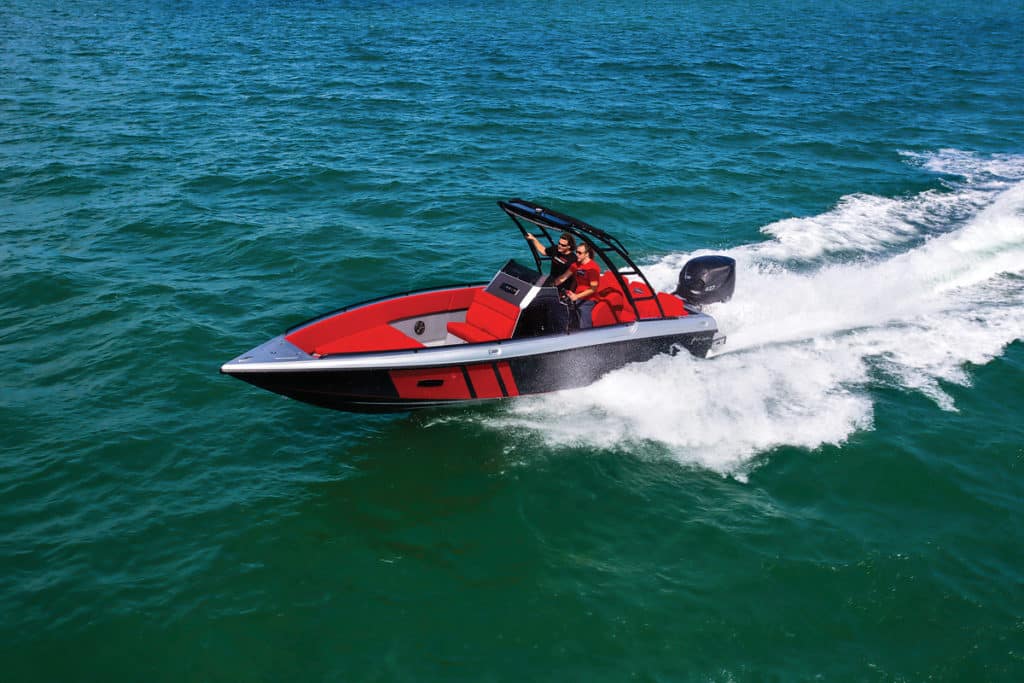
The Carbon Marine Paragon Super Sport 28
The Paragon Super Sport 28 from Carbon Marine is fast (high 70s in mph), super-strong, light (4,500 pounds with fuel) and drop-dead gorgeous. At the launch ramp, two men in a hot Tahoe stopped to take pictures, a guy in a new Corvette pulled in to scope it out, and even the Fish and Wildlife guys came over.
But here’s the thing: With the carbon-fiber fabric plainly visible under the clear gelcoat, everyone had to run their fingers along the hull. Owners of hot offshore powerboats with $30,000 paint jobs will be mightily irked that a Paragon gets more attention.
Pushed by a Seven Marine 627 hp supercharged outboard that looks like Darth Vader’s helmet, we hit 74 mph in early tests, even though we were seeing lots of propeller slippage despite changing props. This boat is so light and strong that no one knew how much prop bite was needed. Dialed in, I’d expect this boat to hit the low 80s.
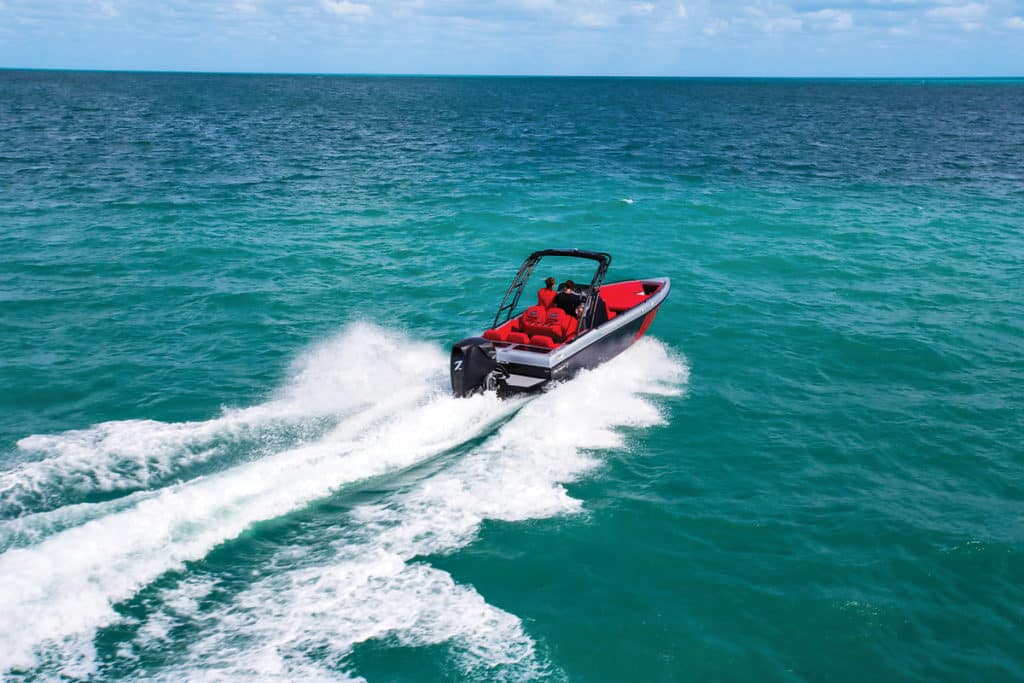
A beautifully handcrafted center console, the Paragon is spare-no-expense first class, from the electric head in the spacious helm console to the gorgeous bright-red upholstery and more JL speakers than I could count. Where the gelcoat isn’t transparent to show the carbon fibers, it glitters silver from the aluminum powder in the gelcoat, and the SeaDek flooring provides traction and a cushy surface.
Underway, this is a waterborne rocket ship with impeccable manners. A touch of engine trim (on the Uflex wheel with paddle controls), and the boat runs fast and hot. We found a big trawler digging a hole and ran through its tall wake at 70-plus mph. Nothing happened — no slamming, noise nor sore knees. We went back and turned in the wake without chine-walking or control issues. We threw it sideways off the wake. The Paragon landed flat and soft and arrowed away. Even better, we were getting an astounding 2 mpg at 51 mph. At 74 mph, we recorded 1.2 mpg.
This boat ain’t cheap, but neither is a Lamborghini. This is about speed, looks and uncompromising quality. I loved it.
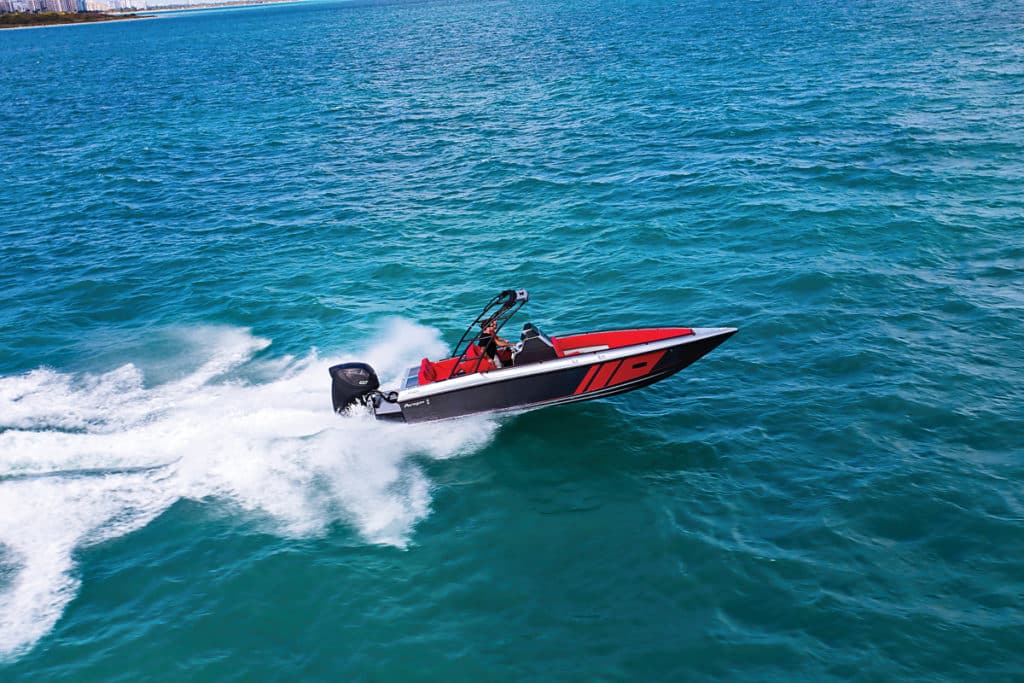
High Points
*Drop-dead gorgeous from the carbon fiber visible in the hull and console, plus the silver shavings in the gelcoat that added sparkle.
*Grab rails are everywhere for safety, along with padded coamings, bolstered seats and SeaDek flooring for comfort underfoot.
*Incredibly fuel-efficient — even flat out, it gets better than 1 mpg.
*Super-strong Armstrong outboard bracket is perfectly braced on the transom.
Low Points
*Trim tabs are too high for good “bite.” (The builder is moving them.)
*Expensive, although much of the price is the $100,000 Seven Marine outboard.
Price: $345,000
Cars, Planes and Boats
Carbon fiber is not new to performance vehicles. Check out some of its uses in other forms of exotic transportation.


